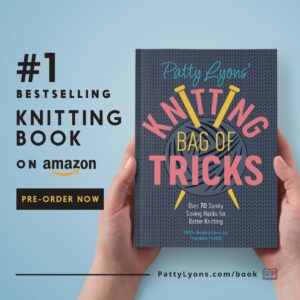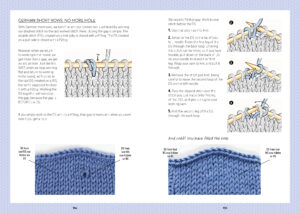 Every serious craftsman values their tools. Carpenters, for example, have rooms of them, and no one talks about how much they spend on tools and how much room they take. Well, those of us who make cloth need lots of tools. Looms, knitting needles, crochet hooks, measuring devices, and YARN! Lots and lots of yarn. Our tools might be smaller, but they do require money to buy them and room to store them. I remember when I was just beginning to assemble the tools I needed for knitting, and was startled at the cost of each circular needle and a sweaters worth of good quality yarn (this was back in the ’90’s). My wise husband said “good tools are expensive, and bad ones are a complete waste of time. Good tools are an investment”. The rest is history.
Every serious craftsman values their tools. Carpenters, for example, have rooms of them, and no one talks about how much they spend on tools and how much room they take. Well, those of us who make cloth need lots of tools. Looms, knitting needles, crochet hooks, measuring devices, and YARN! Lots and lots of yarn. Our tools might be smaller, but they do require money to buy them and room to store them. I remember when I was just beginning to assemble the tools I needed for knitting, and was startled at the cost of each circular needle and a sweaters worth of good quality yarn (this was back in the ’90’s). My wise husband said “good tools are expensive, and bad ones are a complete waste of time. Good tools are an investment”. The rest is history.
Another important tool for every knitter is a good library of books. Sure, you can Google a technique and there are plenty of YouTube videos. But for me, Books are my preferred way to research and learn. I remember talking to Sally Melville when she was thinking about retiring from teaching. She was a GREAT teacher and I learned so much from her. She said “I put everything that I know into my books, so that people will always have access to the knowledge”. That rang a big bell for me. When I wrote “Annetarsia Knits”, that is what kept me going when things got tough. I wasn’t sure how long I was going to be able to teach and wanted the information to always be available for people who were interested in how and why to do intarsia. I’ve been an avid reader and book collector since childhood. We have a LOT of bookshelves in our house. The main library is in the guest room, and when my father visited he commented that I must have every knitting book ever published. I didn’t tell him about the other bookcases in other rooms. (He was one to talk, he was an English professor and his library was very extensive and also fairly esoteric)
Last year, VKL gave me the opportunity to give a lecture, and I decided to explore how craft publications have changed over time. Books are actually fairly new to the industry. Yarn companies produced pamphlets and patterns for many years. I inherited a lot of those from my mother and grandmother, and I bought the Weldon reprints (1885) when Interweave re-printed them in 2000. Everything in my lecture is from my own library, so reflects my own experience. It is really nice to be able to share with other knitters and maybe inspire someone to check out a really great book or magazine that they missed. Or, head to the used bookstore to pick up a treasure.
During the pandemic, the availability of books really slowed to a crawl. Now, things are picking up! VKL asked me to give the lecture again on June 9th, and I am thrilled to have a few new books to feature. Of course, my favorite books are ones that teach us something that will make our knitting more interesting, fun and easy. Patty Lyons is one of the hardest working, entertaining, and brilliant teachers that I know. It is incredible that it took this long for her to write a book, but whenever she is sitting still she is generally knitting. If the pandemic gave us one good thing, it kept Patty from traveling long enough to write and book and give us her knowledge for posterity. I can’t wait to get my hands on it, and pre-ordered a copy the first day she posted that it was listed on Amazon. Patty Lyons’ Knitting Bag of Tricks will be my go-to whenever I want a refresher on any technique. She has a way of explaining WHY to do things one way or the other that helps you to remember the trick. It is really great, and I know that she has influenced my teaching style a great deal. There aren’t very many books that I would recommend sight-unseen, but this is a no-brainer. Buy this book!!! And join me at VKL in June for “Knitting through Time” on June 9!




